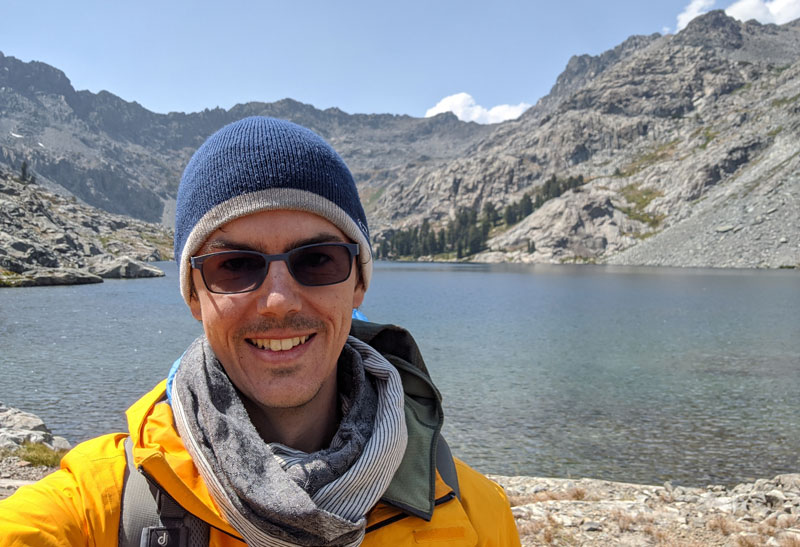The Future of Surgical Robotics is Here - and This Alumnus is Creating It
Author: Engineering Alumni Office
Posted on Oct 18, 2020
Category: Alumni Spotlight

Jason Currie (MSE’15) may be working from his San Francisco Bay Area home these days because of the pandemic, but he’s still hugely excited to log in each day and tackle his current project – a general-purpose surgical robot.
Jason is a senior robotics and controls engineer with Auris Health, Inc., now owned by Ethicon, part of Johnson & Johnson’s medical devices companies. Since 2018, he’s tackled this technical lead role within a huge team working on robot-assisted surgery - a hot area in medtech right now.
The mechatronics engineer says he has a “ton of fun working on this ridiculously cool project.” He began with the company working on hardware integration and mechatronics design, making sure that the pieces talk to each other and perform as they’re told. He also supported the software engineers who were developing code that decides what each part of the robot should do given the surgeon’s commands. He then moved from leading a team in hardware support, to working on risk mitigation and feature development. Now he’s on the software side, writing code for the robot – something he says is a new challenge for him on a large project like this.
Robotic systems in medicine are relatively new and advances are developing quickly. But for Jason, who’s had a passion for robotics since his high school days in British Columbia, the core robotics part of the project is similar to a range of other projects he’s worked on throughout his academic and professional career.
After completing his undergraduate degree in mechatronics engineering at the University of British Columbia in 2011, Jason crossed the country to do a masters in mechanical engineering at UNB and work on a sub-sea robot research project funded by Defence Research and Development Canada (DRDC), Atlantic branch. He’d never before been to Atlantic Canada and was excited by the opportunity for a new experience – and to work on a fascinating project that turned out to be a huge endeavour. He made good headway designing an autonomous submerged robotic device with active control of a hydrodynamic actuator, and was able to test a small-scale prototype at DRDC’s facilities in Dartmouth.
He was distracted, however, by an opportunity at a startup back in Vancouver to develop an autonomous control system to safely and efficiently operate a novel 40 kW hydrokinetic turbine – what Jason calls an “underwater flying wing.” While he was busy innovating during the day at HydroRun, he continued to work on his UNB thesis at night. He successfully defended his thesis and obtained his degree in 2015.
Around that same time, Jason was on the move again, now to San Francisco to lead the commissioning of water and energy innovation company Natel's first two commercial installations of autonomous control systems for a novel set of linear hydro-electric turbines. He says the San Francisco Bay Area is still so far ahead of anywhere in Canada as far as venture capital money to fund research and development on innovative technology and robotics projects – and the opportunities are many. He found his next one at Auris Health, and has been happily working in the biomedical field ever since.
Jason attributes his research at UNB to his quick leap into a career in simulation and motion control of advanced robotic systems. “The experience of accomplishing my portion of the marine project as well as the in-depth knowledge I learned in classes on kinematics, hydrodynamics, control, and real-time operating systems really dovetailed into my work at HydroRun. That jumpstarted my career and led to similar robotics work in the energy, and biomedical fields so far. I’d love to continue to space exploration and asteroid mining as well.”
“I love this work - it’s amazing. And it’s incredible to be able to be a part of this kind of experimental hardware project that requires huge multiyear commitments of massive amounts of funding. That’s the benefit of being in this area – at least for now. Hopefully the work-from-home trend will spread some VC funding further afield and into Canada! I also get to see a lot of interesting labs and ideas from the medical field with different perspectives than I encountered in the energy and sub-sea industries. It’s so much fun to be a part of creating an innovative future.”
